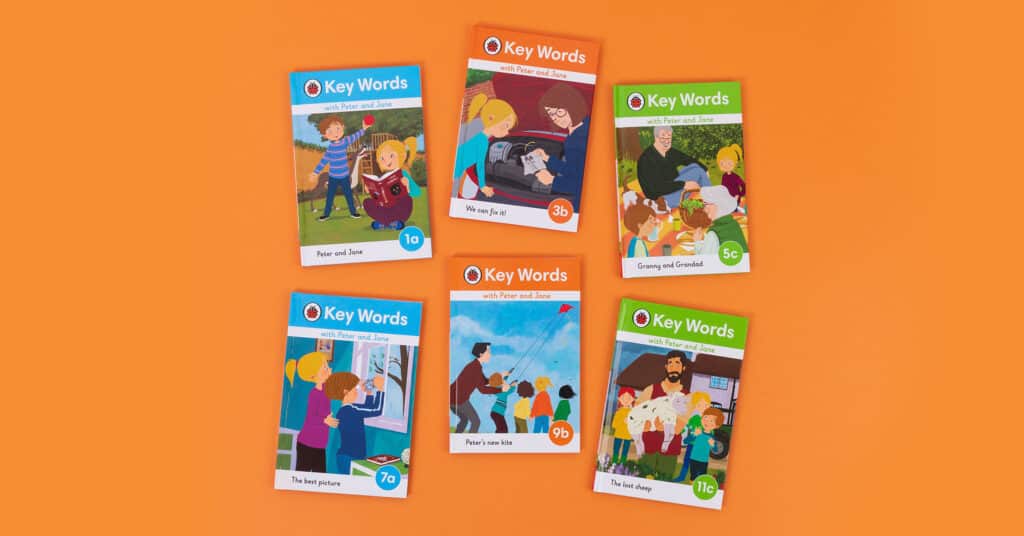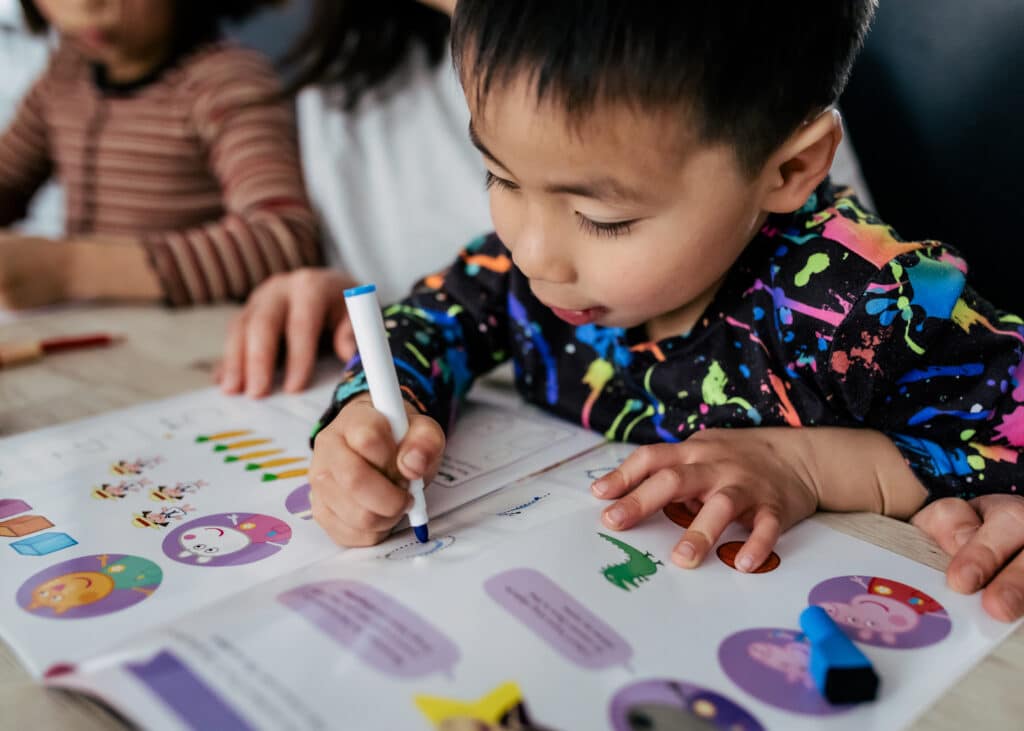How to Use Key Words for Back to School Reading
Introducing the most frequently used words in the English language to children is a wonderful starting point to help them read confidently. Here’s how to use the Ladybird Key Word series to ease their journey back to school.

Ladybird’s Key Words – a series of 36 books over 12 levels – focuses on key words and recognition. There is a recognised science behind the books showing that this method of repetition helps learners with the reading process.
Just a small amount of words form the foundation of the English language:
- 12 key words make up 25% of what we read and write.
- 100 key words make up 50 % of what we read and write.
- 300 key words account for 75% of what we read and write.
It’s proven that if children are taught the most commonly used words first, it is easier for them to learn to read.
These 12 words make up a quarter of all the words we read and write in the English language: a, and, he, I, in, is, it, of, that, the, to, was.
How to achieve a daily rhythm of reading
After the summer holidays and long periods away from school, it can be hard to get learners back into the rhythm and routine of reading and classroom life. The Key Words stories can help activate language they may have forgotten.
Repetition is so important when learning new words. Our own vocabulary goes through a cycle: after we see a word, we have to revisit it numerous times before we can actively use it. Key Words focuses on this vocabulary cycle. New words are repeated on each page, allowing learners to revisit and consolidate each word.
It is always useful to revisit language – particularly after a long summer break. Why not print off the Key Words poster and use it to inspire more reading at home in the lead-up to their return to school?

The power of re-reading
Revisiting familiar stories can help build confidence, especially after a break from regular reading. Encourage speaking about the book in three stages.
Stage 1: Pre-reading
Asking your reader questions can help foster a dialogue about the book. Try some prompts to help them on their journey: what can you remember about this book from the last time we read it? What words can you remember? Can you make a sentence about the book?
Stage 2: Whilst reading
It can be useful to stop after a page or sentence, then act it out, talk about it and recall key information.
Stage 3: After reading
After reading, retell, or summarise the story. Ask who is your favourite character in the book? What is your favourite part of the story?
How to bring reading into your home
Just because school stops over the summer holidays, doesn’t mean reading has to.
In fact, holidays can be the perfect time to read for pleasure and bridge the gap between home and school. Here are our top tips to help inspire a love of reading:
- Give your child lots of choice about what they read. Allow them to explore topics of interest or favourite character stories. It will never feel like a chore if they’re interested in the subject matter.
- Make reading social. Try taking it in turns to read aloud from books at home. Then chat about your favourite parts of the story.
- Play games related to books. You could read the book aloud and play word bingo.
- Encourage reading on the go. Make sure to pack a book when you head out to places like the park, beach, or cafés and encourage them to read in periods of downtime.
- Set aside some reading time before bedtime. Reading is a great way to relax before sleep, together or individually.
Discover the Key Words series.



